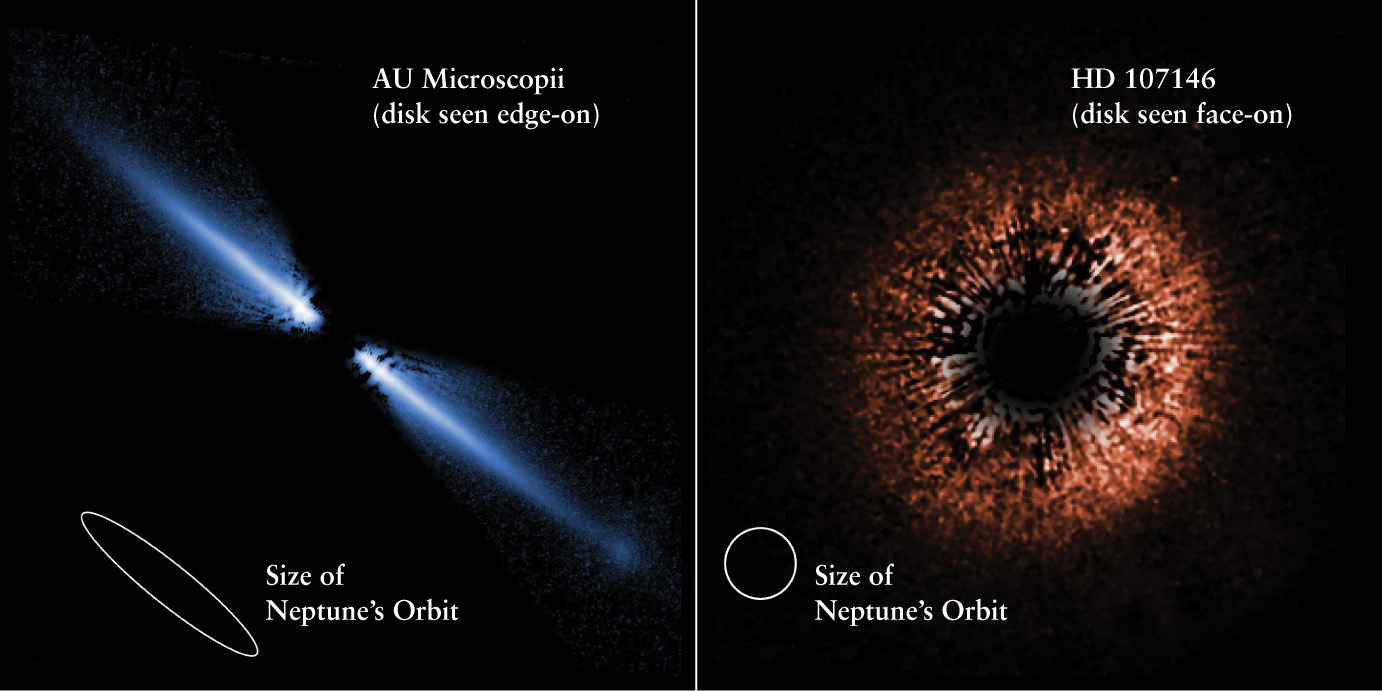CHAPTER
8

Planets are thought to form within the disks surrounding young stars such as these. Neptune’s orbit, shown for scale, is about 60 AU across.
Comparative Planetology II: The Origin of Our Solar System
LEARNING GOALS
By reading the sections of this chapter, you will learn
| 8–1 | The key characteristics of the solar system that must be explained by any theory of its origins |
| 8–2 | How the abundances of chemical elements in the solar system and beyond explain the sizes of the planets |
| 8–3 | How we can determine the age of the solar system by measuring abundances of radioactive elements |
| 8–4 | Why scientists think the Sun and planets all formed from a cloud called the solar nebula |
| 8–5 | How the solar nebula model explains the formation of the terrestrial planets |
| 8–6 | How the Jovian planets formed and migrated in the early solar system |
| 8–7 | How astronomers search for planets around other stars |
What did our solar system look like before the planets were fully formed? The answer may lie in these remarkable images from the Hubble Space Telescope. Each image shows an immense disk of gas and dust surrounding a young star. (In each image the light from the star itself was blocked out within the telescope to make the rather faint disk more visible.) Astronomers strongly suspect that in its infancy our own Sun was surrounded by a similar disk from which the planets of our solar system eventually coalesced.
In this chapter we will examine the evidence that led astronomers to this model of the origin of the planets. We will see how the abundances of different chemical elements in the solar system indicate that the Sun and planets formed from a thin cloud of interstellar matter some 4.54 billion years ago, an age determined by measuring the radioactivity of meteorites. We will learn how the nature of planetary orbits gives important clues to what happened as this cloud contracted and how evidence from meteorites reveals the chaotic conditions that existed within the cloud. And we will see how this cloud eventually evolved into the solar system that we see today.
In the past decade, astronomers have been able to test this picture of planetary formation by examining disks around young stars (like the ones in the accompanying images). Most remarkably, they have discovered planets in orbit around dozens of other stars. These recent observations provide valuable information about how our own system of planets came to be.